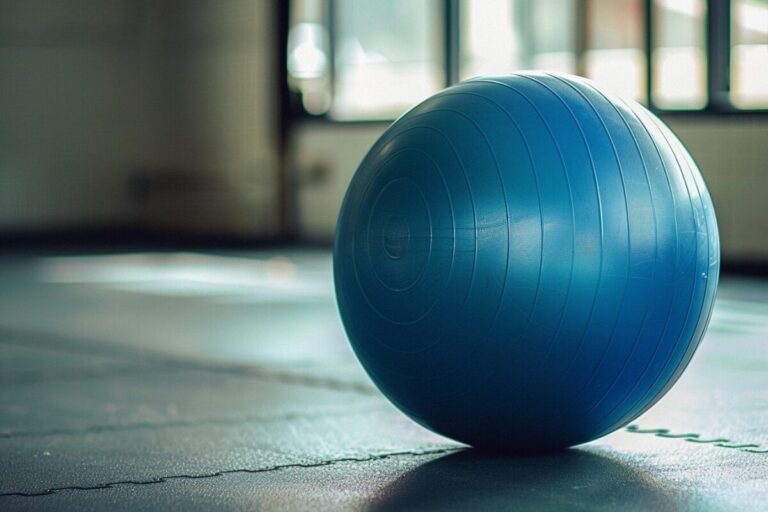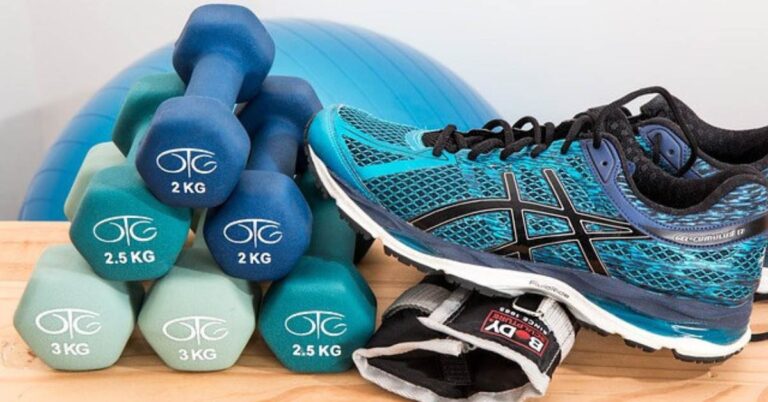Have you ever settled into a plank, ready to test your core, only to be met with a distracting ache in your shoulders? You’re not alone.
It’s a common complaint I hear from friends and gym buddies, and I’ve experienced it myself. Why do planks, an exercise meant to target the abs, end up causing shoulder pain?
In this post, we’ll explore the common reasons behind this discomfort and provide you with simple advice to alleviate and prevent shoulder pain while performing planks.
Whether you’re a fitness enthusiast or someone just starting your health journey, understanding the why and how can make all the difference in your workouts.
So, let’s get to the bottom of this and turn those painful planks into the powerful exercise they’re meant to be.
Understanding Shoulder Pain During Planks
Shoulder pain during planks can be both confusing and frustrating, can’t it? You’re trying to strengthen your core, yet your shoulders seem to scream for attention.
Why might your shoulders hurt? Well, improper alignment could be a key factor.
When you plank, every part of your body needs to be in sync. If your shoulders are hunched or your elbows aren’t directly beneath them, you’re placing unnecessary stress on the shoulder joints. This misalignment transfers the weight incorrectly, straining the muscles and tendons.
Rotator cuff injuries are another common concern. These muscles and tendons stabilise your shoulder, and if they’re overworked through overuse or poor technique, inflammation might occur – hello, tendonitis! Or maybe it’s bursitis, inflammation of the cushioning bursae in your shoulders. Again, incorrect form when performing planks can quickly lead to these issues.
What about strains or tears? They’re a real risk if you’re pushing too hard without proper conditioning.
It’s all about progressively building strength rather than jumping into advanced workouts prematurely.
Consider these points to mitigate shoulder pain:
- Ensure proper form: Elbows under shoulders and body in a straight line from head to heels.
- Gradually increase intensity: Don’t rush into long plank holds.
- Strengthen your rotator cuff: Incorporate exercises that specifically target these muscles.
- Listen to your body: Sharp pain? That’s a sign to stop and rest.
Plank Form and Technique
When you’re dropping into plank position, it’s all about maintaining a balance between strength and precision. Let’s break it down and ensure your shoulders won’t bear more than their fair share of the effort.
Proper Body Alignment
Imagine your body as a long, sturdy board, from your head down to the heels.
Your core should be tight, glutes squeezed, and back in a neutral position, avoiding any sag or peak – it’s all about that straight line. This isometric hold isn’t just about gritting your teeth and bearing it – it’s a deliberate act of balance and core strength.
Keep your gaze down to keep your neck in line too – remember, one seamless line.
Hand and Wrist Positioning
Your hands can be a tell-tale sign of an off-kilter plank. Are your wrists directly below your shoulders, not strayed forward or back?
They should carry some load, but not at the expense of discomfort. Flatten your hands on the mat and spread your fingers wide. Think of them as your roots, anchoring your form from the ground up.
Elbow and Shoulder Placement
Your elbows and shoulders are the crux of your support in a plank – but they shouldn’t be the scapegoats for stress.
Position your elbows directly under the shoulder joint, creating a 90-degree angle. Activating your shoulder blades is key, so think about drawing them down and back. No scrunching up towards your ears – let your shoulders remain broad and strong, your posture impeccable amidst the challenge.
Common Mistakes and Corrections

When attempting the plank exercise, it’s common to focus solely on the duration one can hold the position, often ignoring proper form and technique. However, maintaining correct alignment and posture is crucial to ensure effectiveness and prevent discomfort, particularly in your shoulders.
Avoiding Neck and Spine Compromises
Proper plank form requires that your neck and spine remain in a neutral, straight line.
Avoid letting your neck droop forward or sticking it out at an odd angle, which can place undue stress on your shoulders and upper back. Imagine a straight line extending from your head down to your heels. This alignment keeps the pressure off your shoulders and ensures your core is doing the work.
Keeping the Hips in Position
The position of your hips is pivotal for a successful plank.
Sagging hips or lifting them too high can cause unnecessary strain on your lower back. Aim to keep your hips in line with your shoulders and heels. This not only helps protect your back but also engages your abdominals more effectively, taking some of the burdens away from your shoulders.
Distributing Weight Evenly
Uneven weight distribution is a common error in planks.
Ensure your hands or elbows (depending on the plank variation you’re performing) are placed directly under your shoulders. Your body weight should be equally distributed between your toes and your hands or elbows.
If you find your wrists or elbows bearing too much load, try gripping the floor with your hands to engage more muscles through your forearms and take some pressure off your shoulders.
Exercises for Shoulder Strength and Stability

When it comes to maintaining a healthy and pain-free shoulder joint, it’s integral to focus on both strength and stability. This can be achieved through a variety of exercises designed to fortify the rotator cuff, improve the mobility of the scapula, and bolster the muscles that support your upper body.
Building Rotator Cuff Resilience
Your rotator cuff is pivotal in ensuring shoulder stability.
Resistance band exercises are a fantastic method to start, as they provide controlled tension and can help to strengthen the muscles around your shoulder joint.
- External Rotation: Tie a resistance band around a firm object at elbow height. Stand with your affected side towards the object, elbow bent at a 90-degree angle and arm close to your side. Rotate your arm away from your body and hold before returning to the starting position.
- Internal Rotation: Position yourself similar to the external rotation, but start with your affected arm across your tummy and rotate it towards it, keeping your elbow close.
Build up the repetitions as you grow more comfortable with the movements.
Enhancing Scapular Mobility
Scapular mobility is vital for allowing a full range of motion in your shoulder exercises.
Including full-body exercises which encourage the scapula to move freely can help improve not just mobility but overall upper body strength.
- Scapular Wall Slides: Stand with your back against a wall, arms raised to 90 degrees. Slide your arms up, trying to keep contact with the wall, and then lower them back down.
- Arm Circles: Stand with your arms extended perpendicular to your torso. With small but controlled motions, make circles with your arms, gradually increasing in size.
These movements help your scapula glide smoothly, which is essential for shoulder function.
Strengthening Supporting Muscles
While focus on the shoulder is good, don’t forget the surrounding muscles that offer additional support.
Your chest, upper back, and even your glutes and quads can contribute to shoulder stability.
- Push-ups: A classic exercise that targets the chest while also engaging the arm and shoulder. Ensure correct form by keeping your body straight and lowering yourself until your chest nearly touches the ground.
- Planks: This full-body exercise helps to improve core strength, which is crucial for shoulder stability. Aim to keep your body straight from head to heels and your glutes engaged.
Modifying Planks for Shoulder Pain

If planks are causing shoulder discomfort, making a few adjustments can increase comfort and reduce the risk of injury. Here’s how to tweak your plank form for less strain on your shoulders.
Utilising Forearm Planks
Forearm planks might be the solution if you’re experiencing shoulder pain during your workout. This variation shifts the pressure away from your shoulders, placing more emphasis on your core. To perform a forearm plank:
- Lie face down, resting on your forearms.
- Ensure your elbows are directly beneath your shoulders.
- Engage your core and lift your body, forming a straight line from heels to head.
Remember, it’s crucial to keep your spine neutral to prevent any lower back strain.
Incorporating Plank Variations
Introducing plank variations can engage different muscle groups while taking the load off your shoulders.
One such variation is the side plank, which focuses on the obliques and can be less taxing on your shoulders:
- Lie on your side with your forearm on the ground.
- Stack your legs and lift your hips to form a diagonal line.
- For additional support, you can modify the side plank by bending your knees.
Mixing up exercises with variations like these can also help prevent monotony and overuse injuries.
Applying Supportive Accessories
Enhancing your plank exercise with supportive accessories may alleviate shoulder discomfort and improve your form. Consider using:
- A towel: Roll it and place it under your forearms for cushioning.
- A resistance band: Loop it around your back while in a plank position for added core activation.
Preventing Shoulder Problems

When engaging in exercises like planks, it’s vital to take steps to prevent shoulder pain and injury. Here’s a rundown to keep those shoulders healthy:
Warm-up Properly: Always start with a warm-up to activate the muscles that you’ll be using. This can include dynamic stretches that involve internal rotation and external rotation of the shoulders to prepare them for the workout ahead.
Maintain Balance: Keep your body in balance while doing planks by distributing weight evenly. Ensure your pelvis stays in a neutral position, avoiding the temptation to let it drop as this creates unnecessary tension in the shoulders.
Correct Push-up Form: If you’re doing exercises like push-ups before hitting the planks, pay attention to the form. Keep your hands slightly wider than shoulder-width apart and elbows at a 45-degree angle from your body.
Strengthen Rotator Cuffs: Incorporating external rotation exercises with bands or light weights can prevent injuries such as impingement or osteoarthritis, which could stem from weak rotator cuffs.
Mix It Up with Crunches: It might be worth incorporating exercises like crunches, which take the pressure off your shoulders and focus on your abdominal muscles. Switching up exercises can help maintain overall health and balance in your workout regime.







